15 Wildflowers That Grow in Maryland: Identification Guide (With Pictures)
-

- Last updated:

Maryland is home to a diverse array of wildflowers. They range from delicate spring blooms to robust summer wildflowers. As the weather warms up in the state, you’ll see various wildflowers, such as the showy Black-eyed Susan, the fragrant butterfly weed, the towering ironweed, and the colorful bee balm.
As the temperatures begin to cool, you can enjoy the Blue Wood Aster that brings a touch of autumn to your garden.
No matter what season you’re in, there’s a wildflower that’s sure to brighten up your garden. Whether you’re a seasoned gardener or just looking to add color, check out these 15 wildflowers in Maryland and see which ones you’d like to add to your patch of paradise.

The 15 Common Wildflowers in Maryland
1. Alumroot
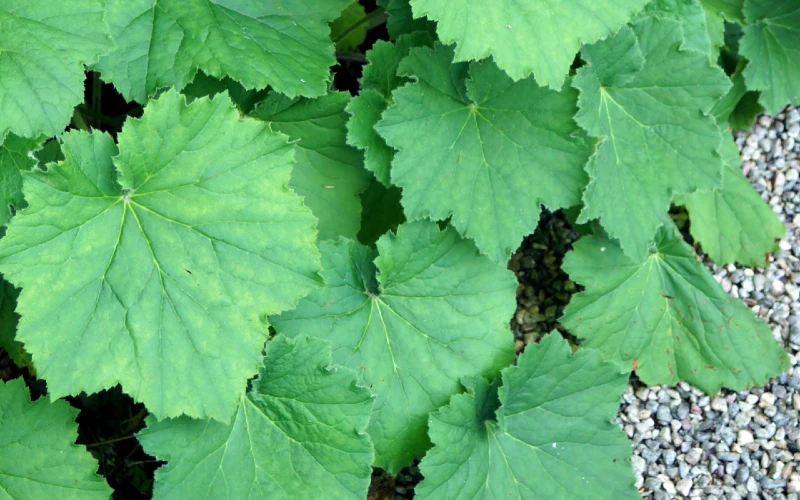
| Scientific Name: | Heuchera americana |
| Average Height: | 1 to 2 feet |
| Soil Type: | Dry to moist well-draining soil |
| Sunlight Exposure: | Partial sun to full shade |
| Distribution in Maryland: | Mountain regions and piedmont |
Alumroot is a perennial wildflower native to the eastern United States, including Maryland. It’s low growing, reaching heights of about two feet. It has deeply lobed green or purple leaves that give the flower a somewhat ruffled appearance.
In the spring and summer, alumroot produces tall, slender spikes of small, pink, or white flowers. These flowers attract pollinators such as hummingbirds and bees, making them a popular choice for gardeners.
Alumroot is a low-maintenance plant that prefers well-drained soil. It’s also drought-tolerant once established. Fertilize the plant once or twice a year to encourage healthy growth. Besides, divide the clumps every few years.
2. Black-eyed Susan

| Scientific Name: | Rudbeckia hirta |
| Average Height: | 1 to 3 feet |
| Soil Type: | Dry to moist |
| Sunlight Exposure: | Full sun to partial sun |
| Distribution in Maryland: | All across Maryland |
Black-eyed Susan is a flowering plant native to North America. It’s a member of the sunflower family. It’s known for its bright yellow or orange flowers with a black center. It blooms from early summer to fall.
It’s a popular choice for gardens and landscaping due to its attractive flowers and low maintenance. Besides, it’s a hardy plant that can tolerate many soil types.
Black-eyed Susan is also excellent for attracting pollinators, such as bees and butterflies1, to the garden. You can plant it in borders, meadows, or naturalized areas. You can also grow it in containers or as a cut flower.
3. Blue Wood Aster
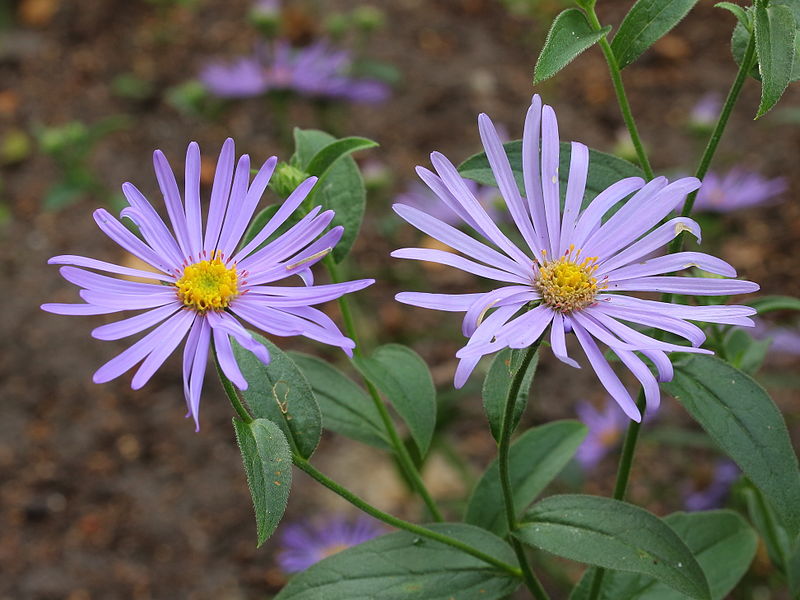
| Scientific Name: | Symphyotrichum cordifolium |
| Average Height: | 2 to 3 feet |
| Soil Type: | Moist to wet soil |
| Sunlight Exposure: | Shady locations to partial sun |
| Distribution in Maryland: | Clearings and open woods |
Blue wood aster is a native perennial wildflower commonly found in wooded areas and along streams in the eastern United States. It has delicate blue or violet flowers that bloom in the late summer and fall. The plant has heart-shaped leaves.
Blue wood aster needs low maintenance and doesn’t need fertilization. But it may benefit from a light application of compost or an all-purpose granular fertilizer during spring. Also, water it often, but don’t allow it to sit in standing water as it can lead to root rot. Deadhead the flowers to promote continuous blooming. Then, cut back the plant in the late fall or early spring to remove any damaged or dead growth.
Blue wood aster is an excellent choice for naturalizing areas and attracting pollinators. It’s also deer resistant, making it an excellent option for gardeners in areas with heavy deer populations.
4. Butterfly Weed
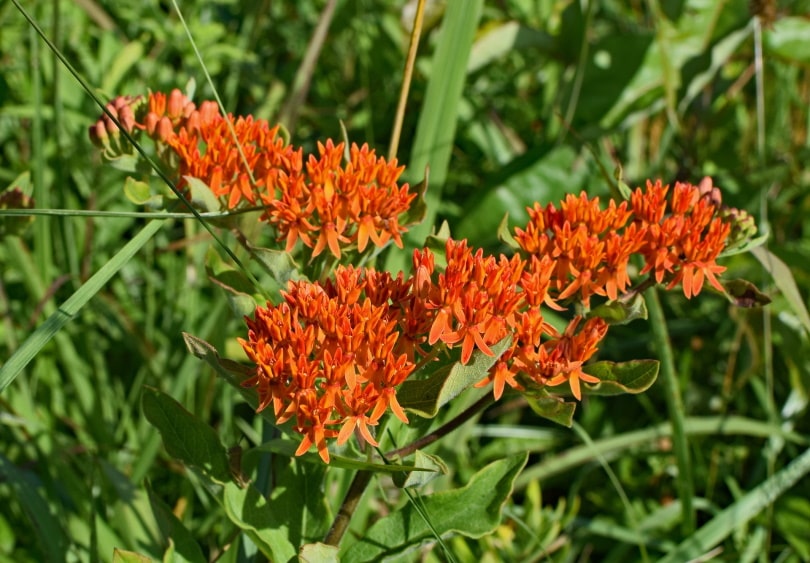
| Scientific Name: | Asclepias tuberosa |
| Average Height: | Up to three feet |
| Soil Type: | Rocky or sandy, well-draining, or dry soil |
| Sunlight Exposure: | Full sun to partial sun |
| Distribution in Maryland: | Steep slopes and rocky outcrops |
Butterfly weed is a native perennial wildflower known for its bright orange flowers. It blooms from June to September, attracting various pollinators, including butterflies, bees, and hummingbirds.
The plant can tolerate drought conditions, making it well-suited for gardens in dry or sunny locations. It’s also resistant to deer and rabbits. Besides, you can use the butterfly weed in various garden settings, including meadows, gardens, and naturalized areas.
5. Cardinal Flower
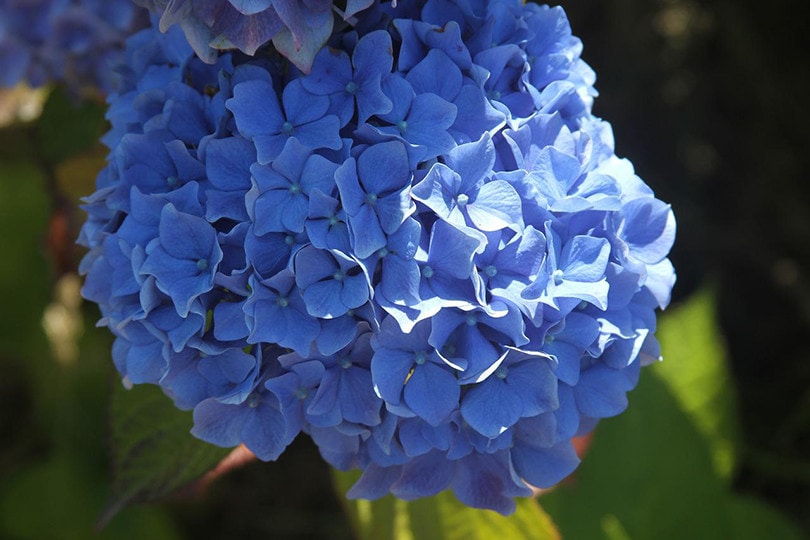
| Scientific Name: | Lobelia cardinalis |
| Average Height: | 2 to 4 feet |
| Soil Type: | Moist to wet soil |
| Sunlight Exposure: | Full sun when wet and partial shade |
| Distribution in Maryland: | Meadows and wet woods |
The cardinal flower is a perennial flowering plant native to the United States. It’s known for its bright red tubular flowers that bloom in the late summer and early fall. The plant has lance-shaped leaves.
Usually, the cardinal flower is used as a border plant or part of a wildflower garden. It is easy to care for and is a striking addition to any garden. But be aware that the plant can be toxic if ingested. So, plant it out of reach of children and pets.
6. Eastern Columbine
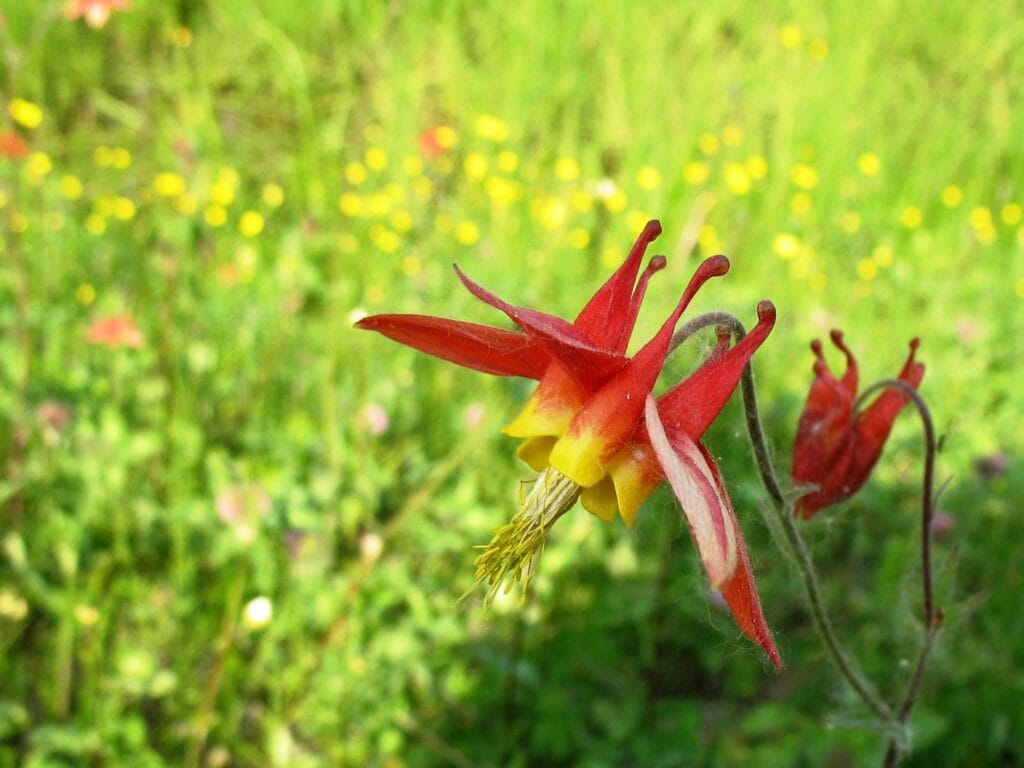
| Scientific Name: | Aquilegia canadensis |
| Average Height: | Up to 30 inches |
| Soil Type: | Well-draining, slightly acidic to alkaline |
| Sunlight Exposure: | Partial sun or partial shade |
| Distribution in Maryland: | Adequately moist steep slopes |
Eastern columbine is a flowering herbaceous plant native to North America, commonly found in wooded areas, meadows, and stream banks. The plant also has delicate, fern-like leaves. It bears showy, spurred flowers in shades of red, pink, yellow, and white.
Its blooming season runs from late spring to early summer. You can use it as a border plant or as a ground cover. It is also well-suited for naturalized areas and woodland gardens.
Usually, the plant is resistant to pests and diseases. It’s also drought-tolerant. You can propagate2 it using seeds or division, and it may self-seed in the garden.
7. False Blue Indigo
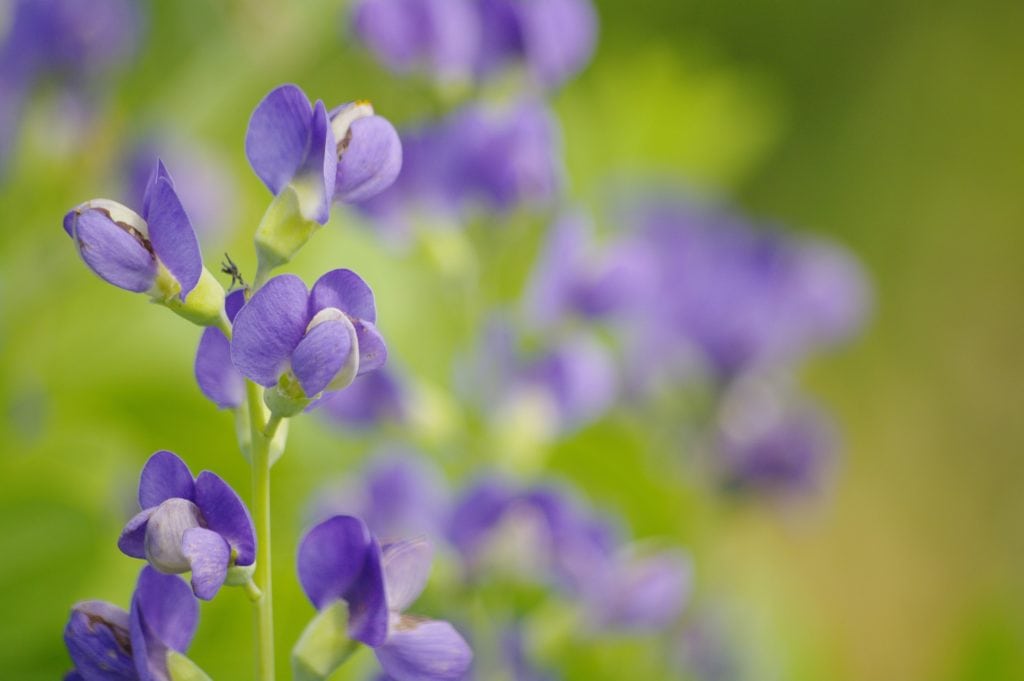
| Scientific Name: | Baptisia australis |
| Average Height: | 3 to 5 feet |
| Soil Type: | It can tolerate clay and sandy-rocky soil |
| Sunlight Exposure: | Partial shade to full sun |
| Distribution in Maryland: | Piedmont and mountain regions |
False blue indigo is an herbaceous perennial native to the United States. It’s known for its blue-purple flowers, which bloom in the late spring and early summer. The plant is bushy and drought-tolerant.
You can plant false blue indigo in various garden settings, including naturalized areas, meadows, and cottage gardens. It is also suitable for planting in containers. False blue indigo can also grow in a wide range of soils but prefers well-draining soil.
Once established, it is drought-tolerant and doesn’t need frequent watering. It can live for many years with proper care.
8. Foxglove Beardtongue
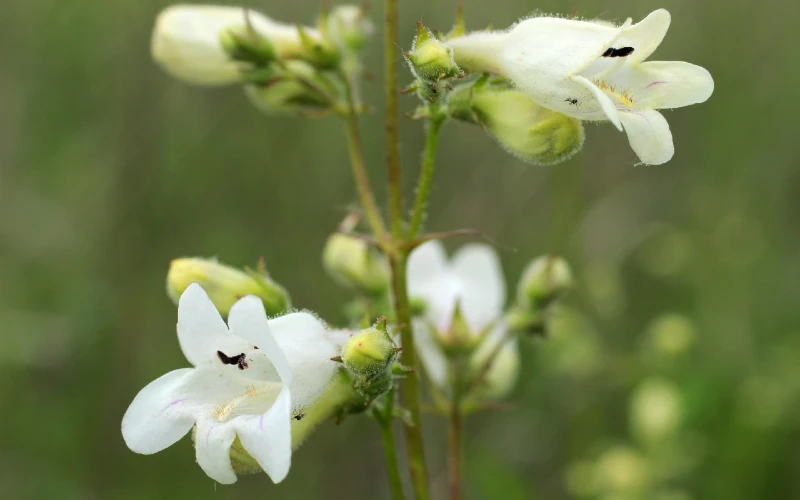
| Scientific Name: | Penstemon digitalis |
| Average Height: | 3 feet |
| Soil Type: | All soil textures but does best in compact urban soil |
| Sunlight Exposure: | Light shade to full sun |
| Distribution in Maryland: | Woodland openings and moist meadows |
Foxglove beardtongue is a flowering plant native to North America. It’s a popular choice for gardens due to its long blooming season lasting from late spring to early summer. The plant produces tall spikes of white, pink, or purple bell-shaped flowers that attract hummingbirds and bees.
Foxglove beardtongue is often used as a border plant or in mass plantings. It’s drought-tolerant, making it a low-maintenance plant for gardens. It’s also resistant to pests and diseases but can be prone to powdery mildew in humid conditions.
9. Great Blue Lobelia
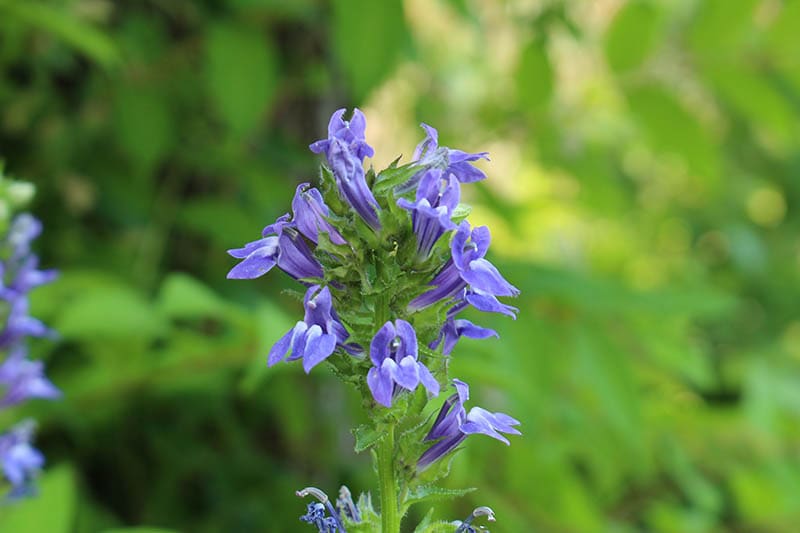
| Scientific Name: | Lobelia siphilitica |
| Average Height: | 1 to 4 feet |
| Soil Type: | Moist or wet soil of any texture |
| Sunlight Exposure: | Partial to full sun |
| Distribution in Maryland: | Damp meadows |
Native to North America, Great blue lobelia is an herbaceous flowering plant, a member of the bellflower family. It’s known for its tall, slender spikes of bright blue flowers.
The plant has lance-shaped leaves that are dark green on the top and lighter green on the underside. It’s a hardy plant and can tolerate drought conditions but will produce more flowers if watered adequately.
The bright blue flowers of the great blue lobelia are a favorite of hummingbirds and butterflies, making it a popular choice for pollinator gardens. The plant blooms from mid-summer to early fall. It’s often used in garden beds, borders, and as a cut flower.
10. Golden Groundsel

| Scientific Name: | Packera aurea |
| Average Height: | Up to 2.5 feet |
| Soil Type: | Rich wet or moist soil |
| Sunlight Exposure: | Full shade to partial sun |
| Distribution in Maryland: | Floodplains and wet woods |
Golden groundsel is a flowering herb known for its attractive golden-yellow flowers that bloom in late spring and early summer. It’s a low-maintenance plant that is easy to grow and care for.
It’s tolerant of a wide range of soils and can be grown in containers or on the ground. It’s a popular choice for pollinator gardens because it attracts bees, butterflies, and other insects. It is also a good choice for naturalizing.
Golden groundsel can be grown in a variety of climates, and it’s a popular choice for gardeners in the Eastern and Central United States.
11. Joe Pye Weed
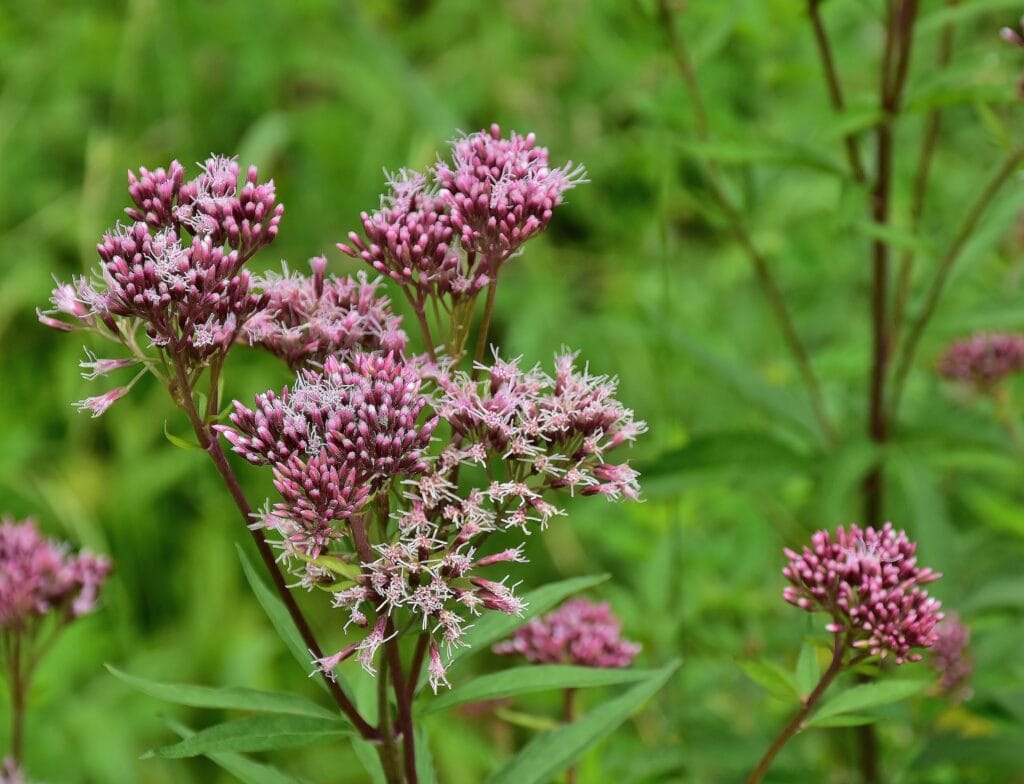
| Scientific Name: | Eutrochium fistulosum |
| Average Height: | 6 to 9 feet |
| Soil Type: | Moist or wet soil of any texture |
| Sunlight Exposure: | Partial to full sun |
| Distribution in Maryland: | Sunny meadows throughout the state |
Joe Pye weed is a tall, herbaceous perennial plant named after a Native American healer who is said to have used the plant to treat various ailments. It has large purple-pink flowers that grow in clusters on tall, sturdy stems. The leaves are oval-shaped and dark green. The plant has a bushy, mounded habit.
It blooms from late summer to early fall, attracting butterflies and other pollinators to the garden. It tolerates many soil types, but it’s not drought-tolerant and will need regular watering during dry periods.
12. New York Ironweed
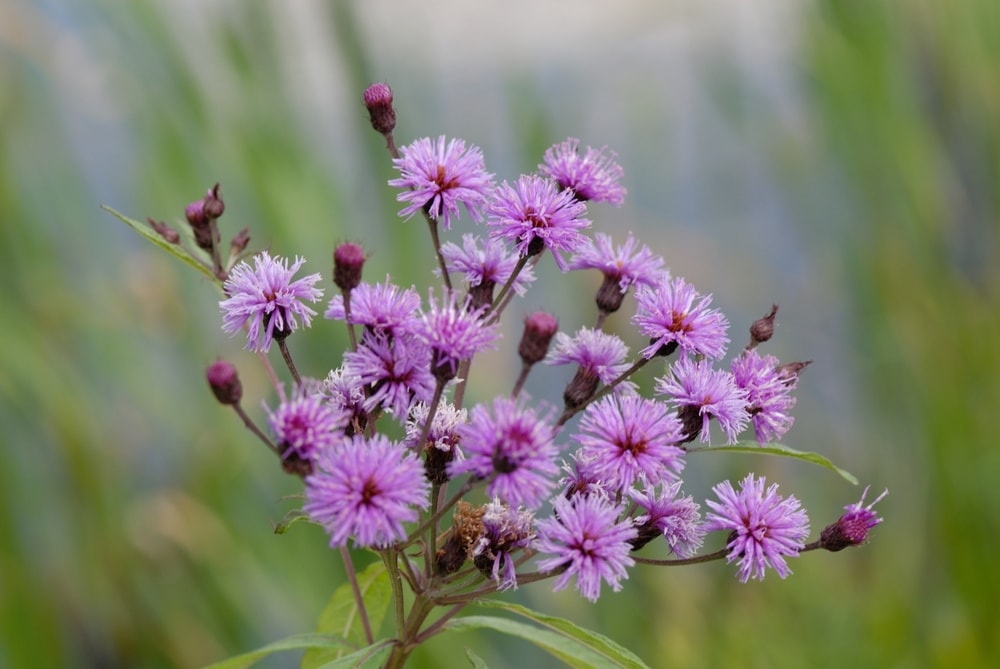
| Scientific Name: | Vernonia noveboracensis |
| Average Height: | 3 to 8 feet |
| Sunlight Exposure: | Full to partial sun |
| Distribution in Maryland: | Wet and moist meadows and sunny floodplains |
New York ironweed is a native perennial wildflower known for its tall purple flower spikes and deep green foliage. It’s found in moist areas, open woodlands, and alongside streams and rivers in the eastern United States.
Its purple flowers bloom from late summer through early fall, attracting butterflies and other pollinators. They are often used in wildflower gardens and naturalized areas.
It is a beautiful addition to any garden as it provides a burst of color.
13. Rosemallow
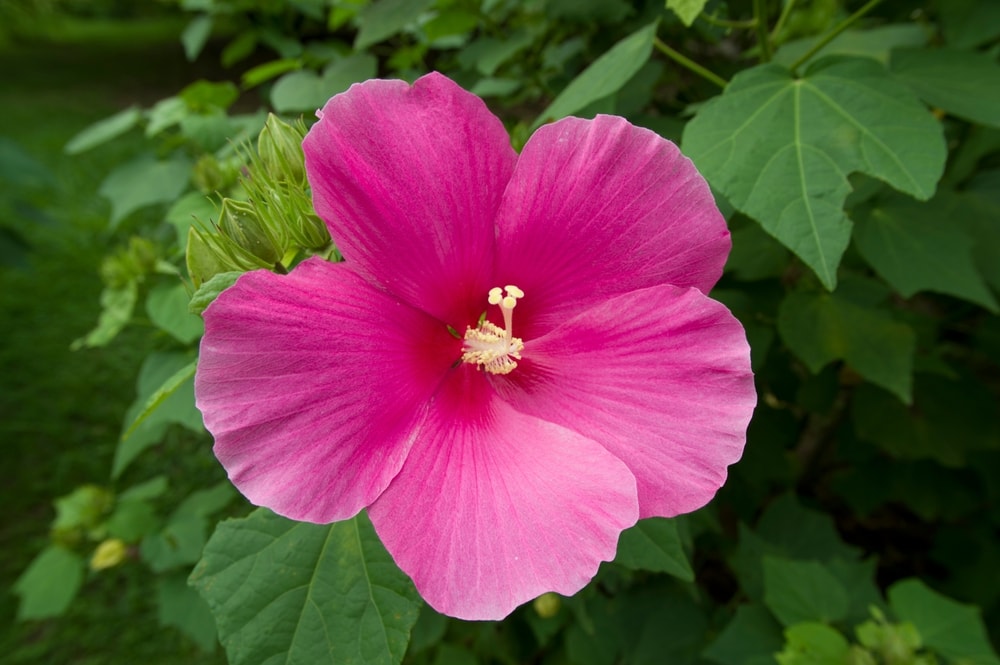
| Scientific Name: | Hibiscus moscheutos |
| Average Height: | 4 to 7 feet |
| Soil Type: | Wet or moist loamy or coarse soil rich in organic matter |
| Sunlight Exposure: | Full to partial sun |
| Distribution in Maryland: | On the edges of ponds, wet meadows, and fresh and brackish marshes |
Rosemallow is a genus of flowering plants in the mallow family, Malvaceae. It has large, showy flowers that bloom in various colors, including red, pink, orange, yellow, and white. The flowers can be as large as 6–10 inches in diameter with a distinctive funnel-shaped appearance.
The flower is sensitive to frost and should be protected during cold weather. It will bloom in the summer and fall, but some varieties may bloom year-round in warm climates.
You can use Rosemallow as a backdrop for smaller plants or as a standalone focal point. They can also be grown in pots or containers.
14. Turk’s Cap Lily
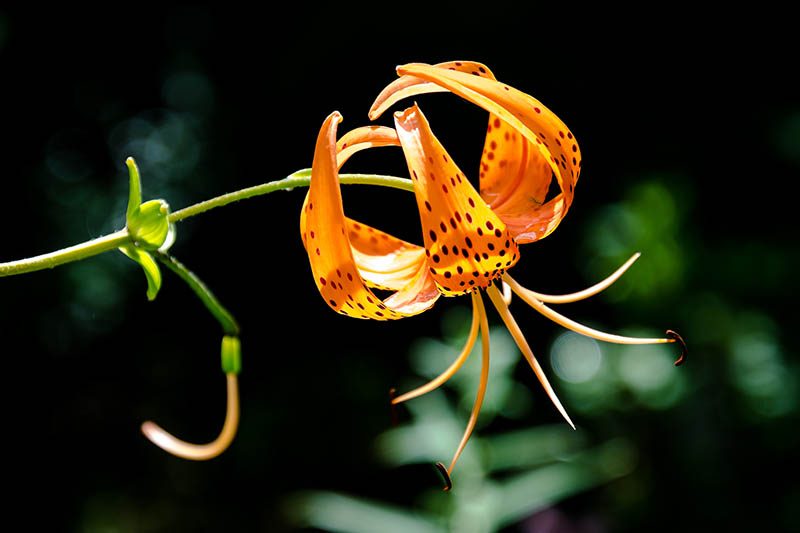
| Scientific Name: | Lilium superbum |
| Average Height: | 3 to 5 feet |
| Soil Type: | Moist to wet soil |
| Sunlight Exposure: | Partial to full sun |
| Distribution in Maryland: | River banks and wet meadows |
Turk’s cap lily is tall with large, showy flowers that resemble the Turk’s caps or turban-shaped hats. The flowers are orange or red and have a distinctive curved shape. The flowering season for Turk’s cap lilies is in late summer or early fall.
The plant prefers cool temperatures, and it needs regular watering and fertilization to maintain healthy growth.
You can use it in borders, as a specimen plant, or in naturalized areas. It is a popular plant for hummingbirds and butterflies, making it an excellent choice for a wildlife garden.
15. Wild Bergamot

| Scientific Name: | Monarda fistulosa |
| Average Height: | Up to 4 feet |
| Soil Type: | Well-draining soil with little organic matter. It also tolerates rocky and clay soils. |
| Sunlight Exposure: | Full sun to light shade |
| Distribution in Maryland: | Woodland edges and poor dry soils of meadows |
Wild bergamot is also known as bee balm, wild oregano, and horsemint. It has fragrant pink, purple, or white tubular flowers. It also has hairy leaves and a square-shaped stem, characteristic of plants in the mint family.
Wild bergamot flowers summer, attracting pollinators such as bees, butterflies, and hummingbirds. It is often used in gardens for its attractive flowers. Sometimes, it’s also used in herb gardens.

Conclusion
Wildflowers are a crucial part of Maryland’s ecosystems. They provide food and habitat for pollinators and other wildlife, as well as add color and beauty to the state’s landscapes and gardens.
You can find them in various habitats, including meadows, forests, and alongside roads.
If you’re interested in incorporating wildflowers into your garden, this resource will help you get started. With little planning and care, you can have a stunning display of Maryland’s wildflowers in your backyard.
Featured Image Credit: Joshua J. Cotten, Unsplash
Contents
